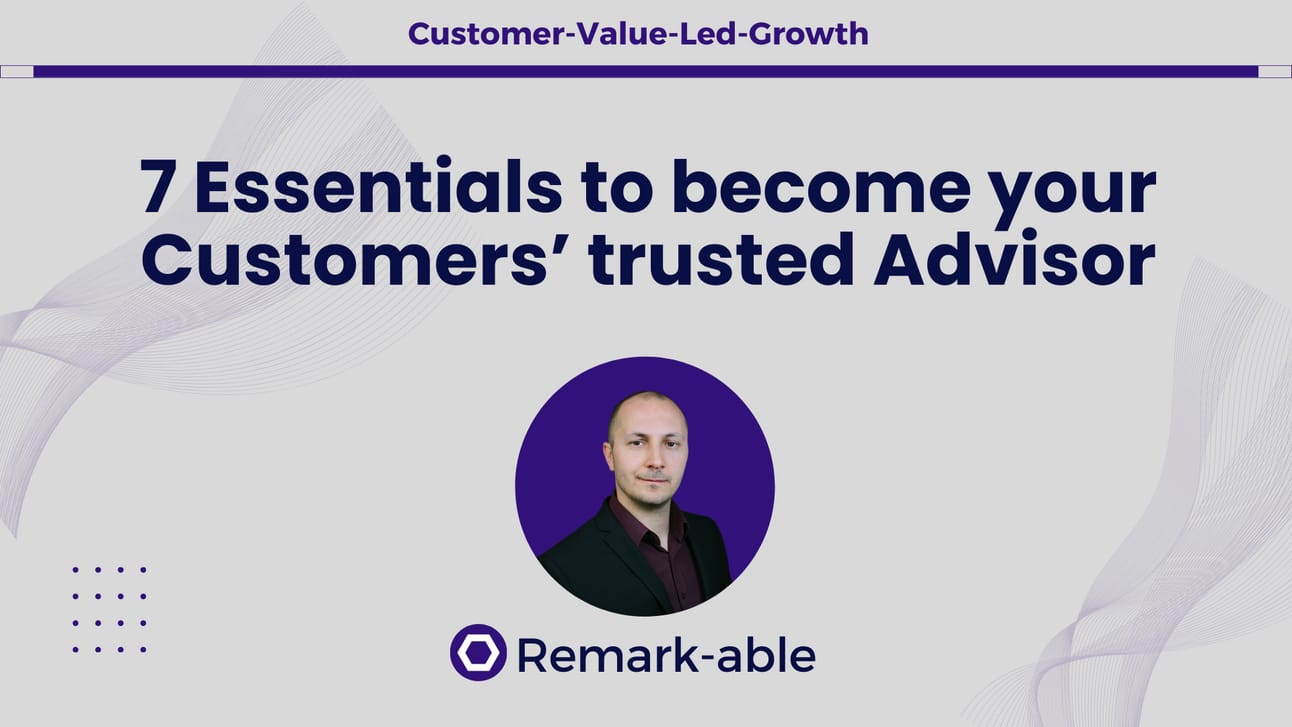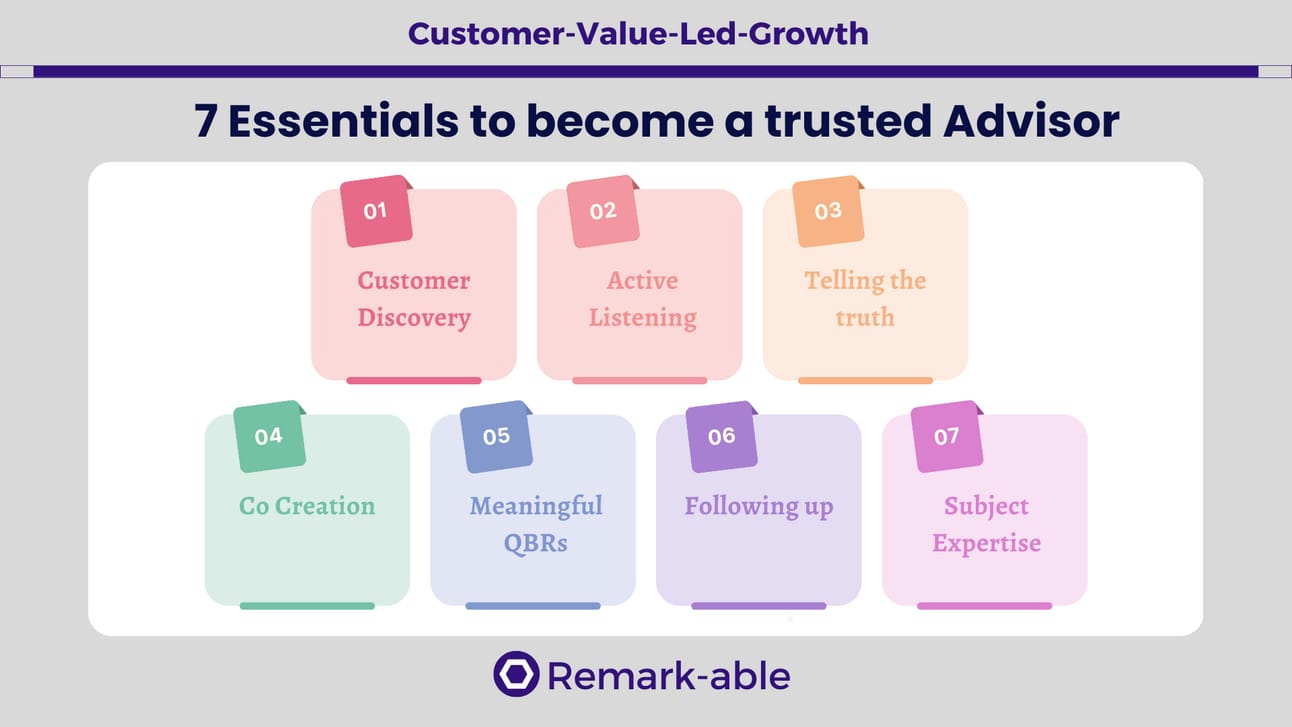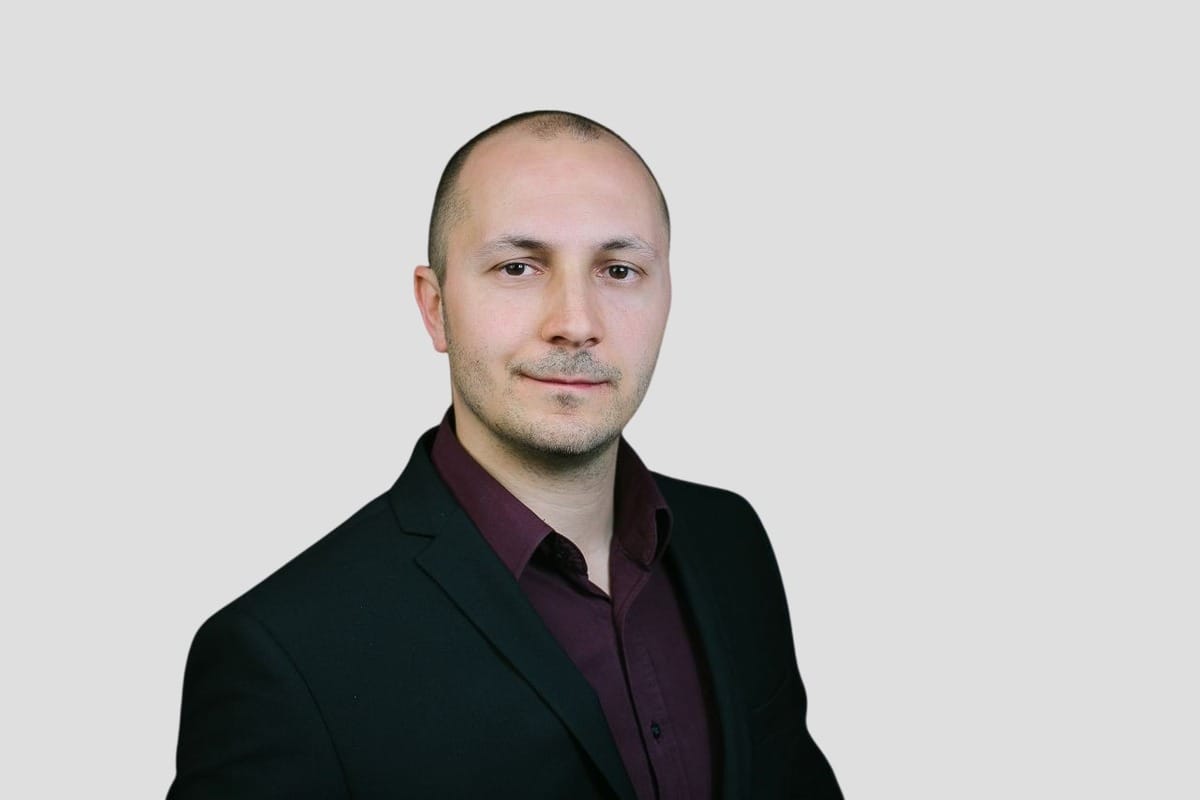There’s a reason 400,000 professionals read this daily.
Join The AI Report, trusted by 400,000+ professionals at Google, Microsoft, and OpenAI. Get daily insights, tools, and strategies to master practical AI skills that drive results.

Hi, Markus here. Welcome to a new episode of the Customer-Value-Led-Growth Newsletter.
Every week, I share strategies, guides, and frameworks to help you create exceptional value for your customers and company.
If you are not a paid subscriber, here’s what you might have missed:
Consider subscribing to get access to 100+ posts and support my work 👇
Customer expectations are still climbing and so are churn rates. CSMs need to adapt to their growing demands.
Telling your customers where to click on the product is no longer enough. Becoming your customers’ trusted advisor is not nice anymore, it’s a necessity.
Over the past few years, it has become a buzzword because a gazillion people talked about it. What almost none talked about was how you actually become one.
Not by accident but with intention and direction - repeatedly. In today’s post, I’ll cover the ground with what my research and experience concluded as essential.

1. Run a thorough Discovery
Understanding your customers’ needs is essential to building accurate success plans and providing them with the right education and training. You know that because I’m talking about it in literally half of my newsletters.
But there’s another reason why you should have these conversations. Who are the people you trust? Most likely, the ones that make you feel that they care about you.
Your customers are not different. If they feel that you genuinely care about their needs and their success they will trust you.
What better way to show them right from the beginning? Meeting with your customers for non-scalable 1:1 conversations and sending “personalized” welcome E-mails are worlds apart.
2. Practice Active Listening
Of all the things that are going wrong in CSM right now, this might be the worst of all. I have no idea where it’s coming from but I have met so many CSMs who just won’t shut up.
They spend their customers’ conversations doing 95% of the talking. Talking about what you care about is destroying trust. Why would your customers open up to someone who visibly does not care about them at all?
Yes, it’s not your intention but that’s how you are perceived. Your customer conversations should consist of you talking 20% and listening 80% of the time (roughly).
Your customers want to be seen and heard. Think of yourself as their business therapist. Ask open questions to understand their needs, concerns, fears, and experiences. If you are changing one thing about your work, choose this one.
3. Tell Customers the Truth
The customer is not always right. They are not getting what they want every single time. It’s not pleasant to call out your customers when they are doing things wrong. It’s not pleasant to tell them that the feature they want did not make it to the roadmap.
In the short term, you may avoid conflict but someday it will fire back at you. You can’t tell your customers the lie that the product team is still reviewing their feature requests forever. The longer you wait, the worse it becomes.
Far worse is when you keep your customers believing they are doing great when they are doing things wrong. At the end of the day, your customers care about results.
If they are not there being considerate of your customers’ egos will not save you. Tell your customers what they are doing wrong in a respectful way and show them what they need to do instead.
4. Enable Co-Creation
A Customer Success Plan is not an internal document. It’s not meant to collect (virtual) dust in your archives. It’s a shared roadmap that outlines the steps customers need to take to become successful.
The best way to build them? Together with your customers. It helps you to avoid costly misunderstandings but also builds trust. There’s full transparency and your customers have a say in where things are heading.
However, I would not recommend building those plans from scratch as it might take forever. Create a draft and meet with your customers to get their feedback. Start only when both sides agree that this is the way to go.
Further opportunities for co-creation are setting the QBR Agenda and defining the contents of stakeholder reports (e.g. the CFO at your customers’ company).
5. Host meaningful QBRs
We can debate whether we need to have them at all. But as long as they are we need to use them to our advantage. Your QBRs are a medal with 2 sides. Done wrong they are a total waste of your customers’ time (and yours) and kill trust.
Done right they are a powerful asset for customer success controlling and building trust. What is the right way? Your customers have purchased your product because they want to increase revenue, reduce costs, improve productivity, etc.

Your QBRs are quarterly evaluations of your customers’ progress toward these goals. Their purpose is to find out what worked, what did not, and why. The consequences are either keeping course or correcting it.
That means they are all about your customers and what they care about. And again, you are making deposits on the “trust account”.
6. Follow up regularly
Starting with your customers on the right foot is important. However, all its benefits are nullified if you don’t keep your eyes on the ball. Despite your best efforts, there’s no guarantee that your customers succeed.
Of course, you are here to help. You’ve told your customers they can reach out at any time if they need your support. The only problem is, as research says, that most customers never do.
They are suffering in silence until they are pulling the plug. Following up with your customers is crucial to ensure they are making steady progress.
And unlike random check-ins that only happen when things appear to go south, it signals that you seriously care about their success.
7. Build Subject Expertise
Winning your customers’ trust is the foundation to build meaningful and long-lasting relationships. To qualify as an advisor, you need to build substantial subject expertise.
Your customers don’t care about features and functions. They are merely the tools that help them get what they came for. The critical success factor is quality inputs.
If your customers target the wrong audience, create poor content, chase the wrong leads, etc. even an outstanding product will make them successful.
As an advisor, you need to be able to validate what your customers do and come up with qualified suggestions on how to improve their input.
So far, I’ve identified 4 effective ways to build your subject expertise:
Follow thought leaders via social media, newsletters, and podcasts
Join webinars, courses, or training to deepen your knowledge
Learn from your most successful customers and understand how they are doing it.
Reflect on what you’ve learned, adapt it for your business, and build your methodologies.
Did you like this episode? Who else would benefit from reading it?
Here’s how I can be of further help:
*NEW* Community and Coaching: Learn how to reinvent Customer Success Management as your company’s most powerful growth engine.
Courses and Guides: Get the strategies and tools to deliver, grow, and monetize Customer Value and transition from reactive to proactive work in the process.
Sponsorships: Promote your product, service, content, or event to 6.6k+ CS professionals by sponsoring the CVLG newsletter.


